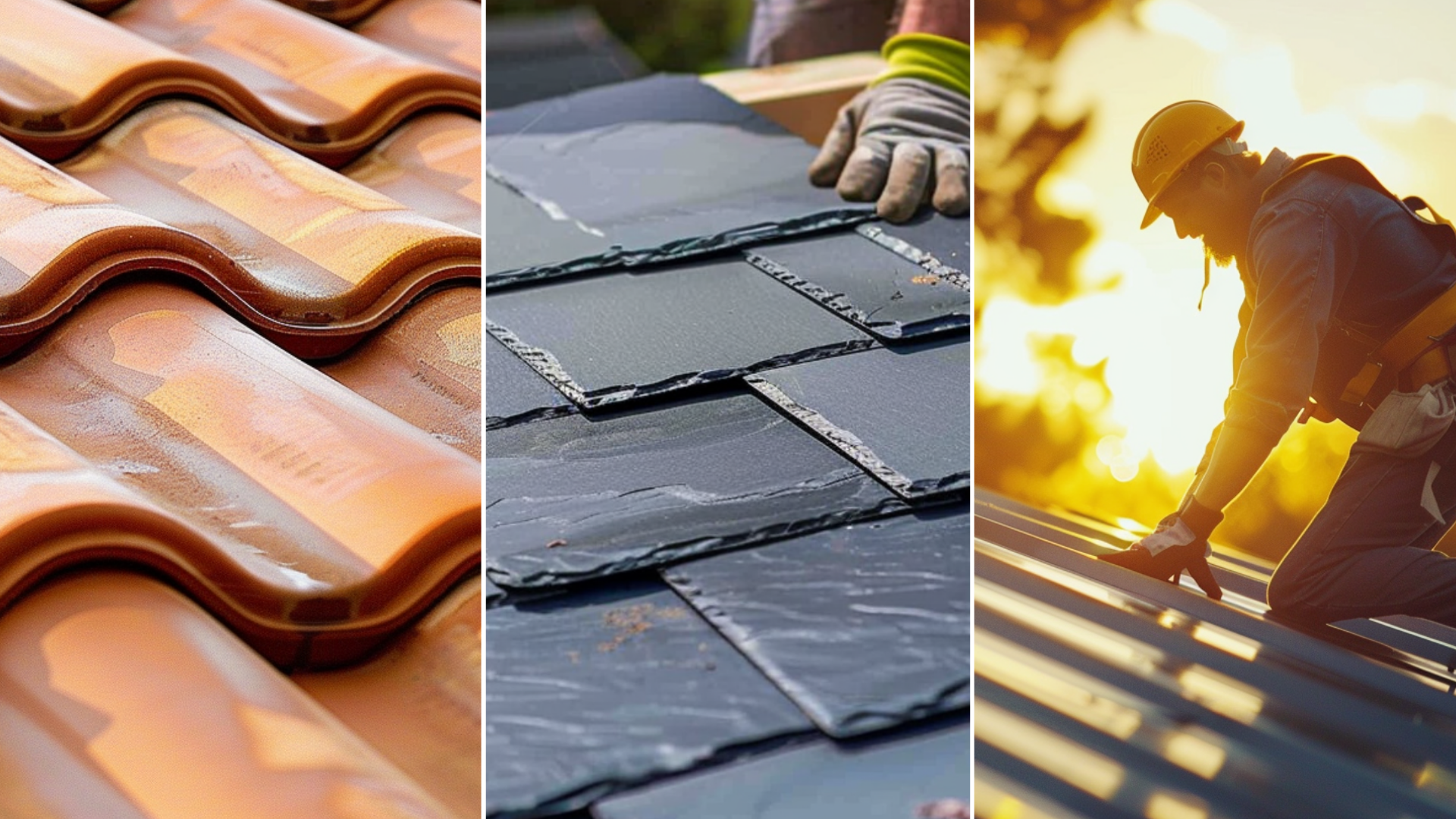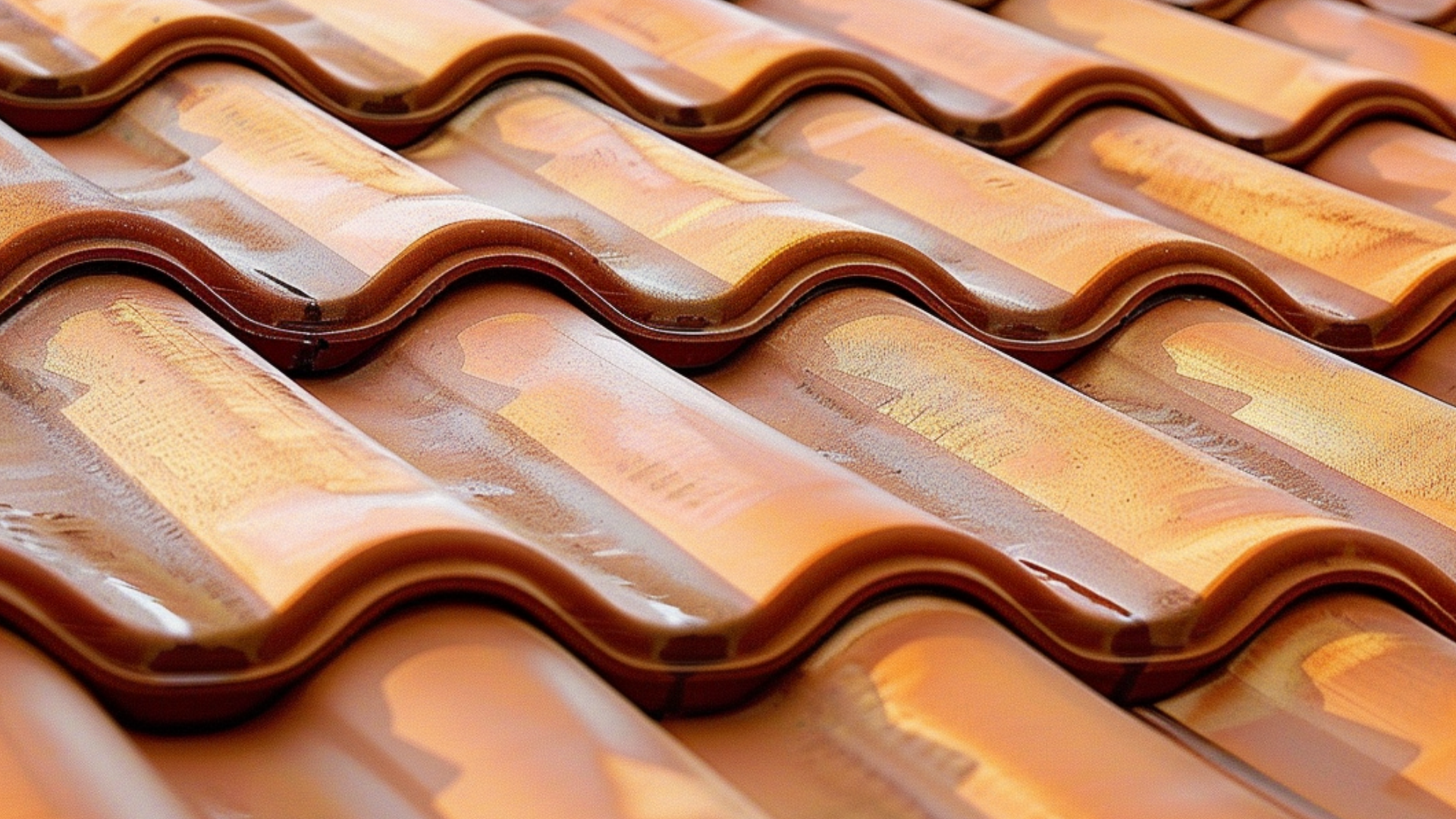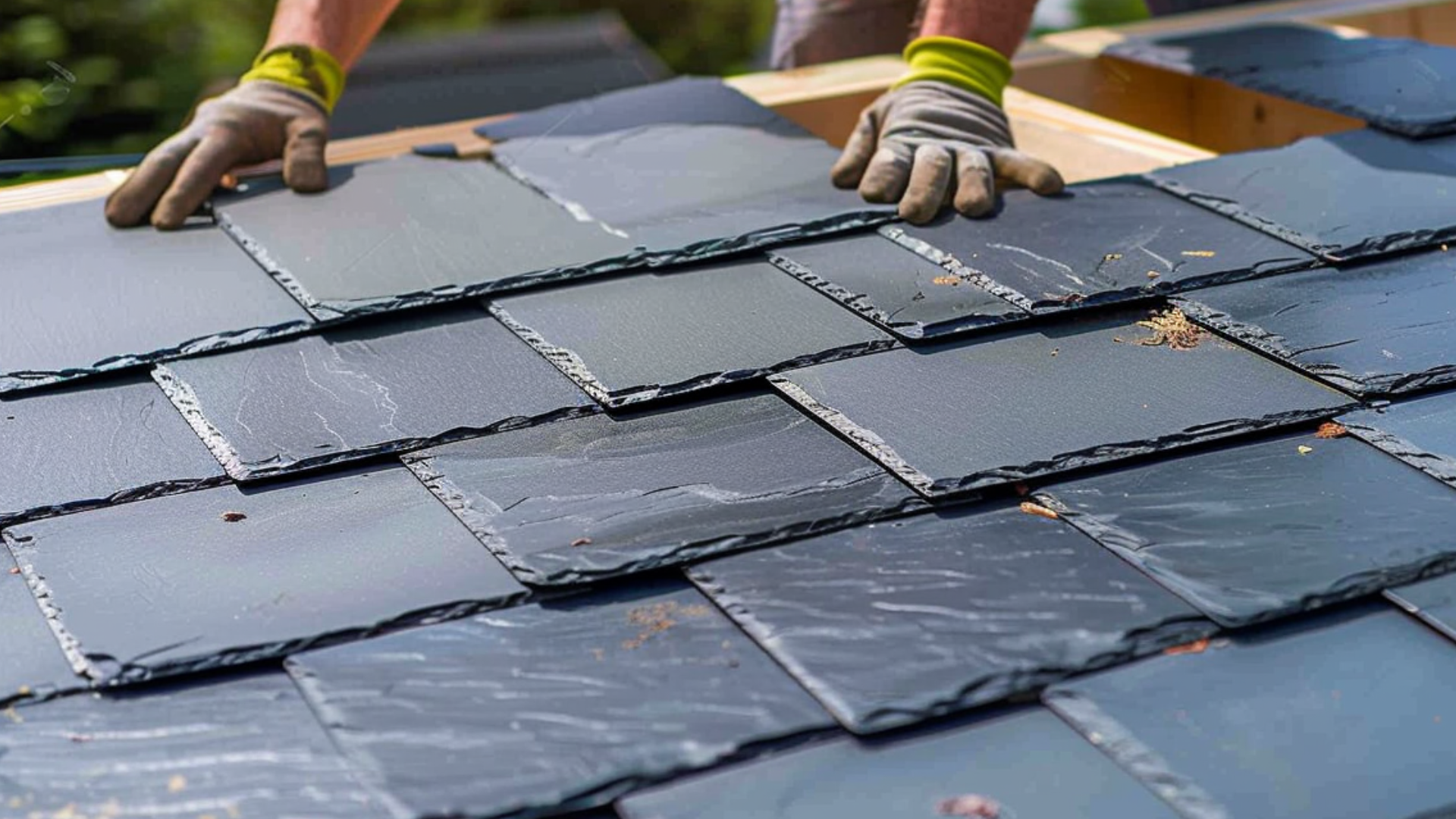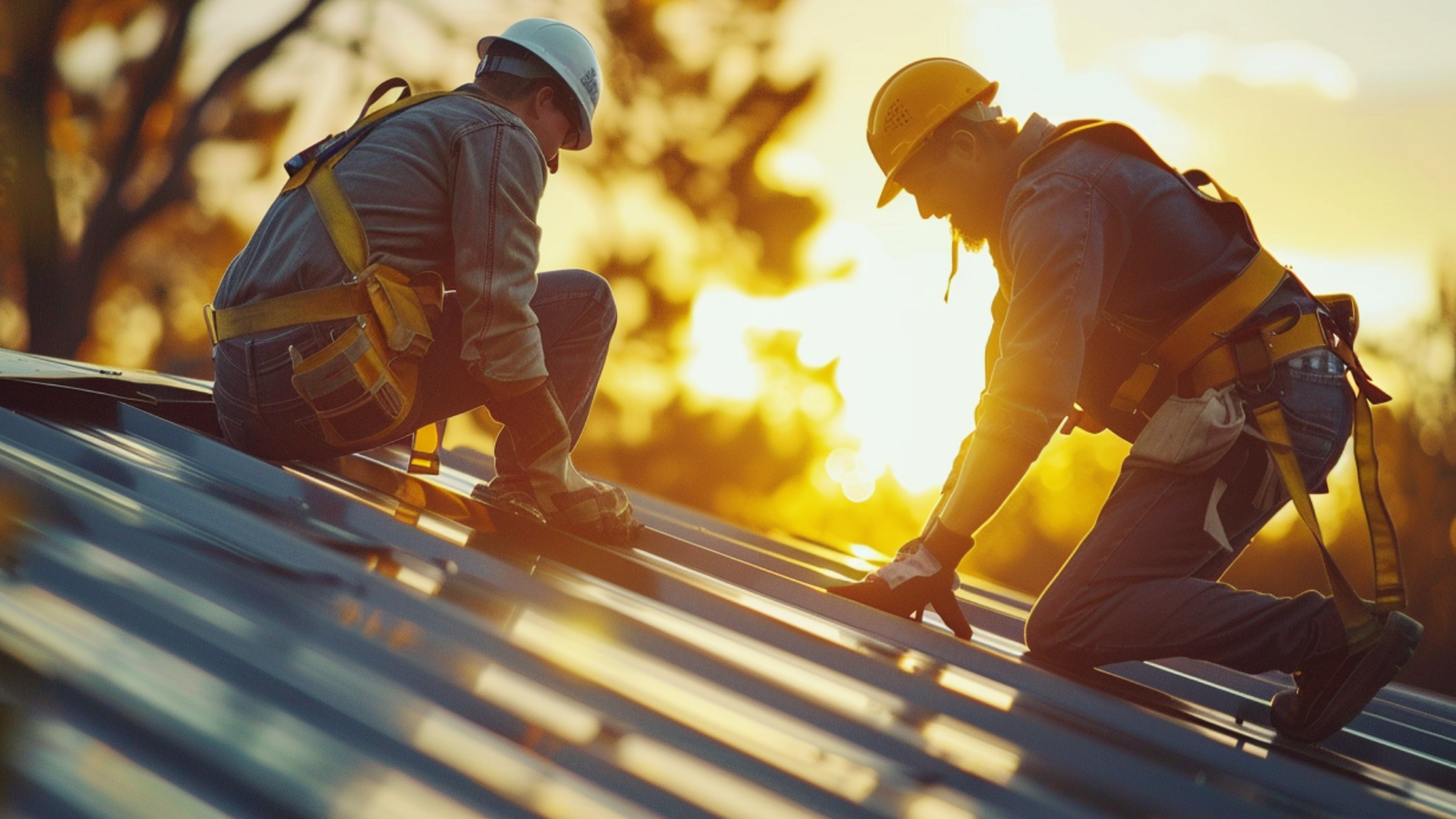Roofing Materials

Roofing Materials
Whether it’s asphalt shingles, metal roofing, clay tiles, or cedar shakes, each material possesses unique characteristics that impact a roof’s performance and longevity. For example, asphalt shingles are often seen as a cost-effective roofing option, while metal roofing can offer superior durability and longevity. Additionally, considering factors such as color options, individual shingles, and the ability to withstand extreme weather conditions can further refine the decision-making process for homeowners undertaking roof renovations.
Asphalt
Asphalt roofing has gained immense popularity in the construction industry due to its numerous benefits and cost-effectiveness. This roofing material is known for its exceptional durability, making it a top choice for homeowners looking for long-lasting solutions. It can withstand various weather conditions, including high winds, heavy rain, and extreme temperatures, ensuring the safety and protection of residential properties.
One critical advantage of durable asphalt roofing is its affordability. Traditional asphalt shingles are relatively inexpensive compared to other roofing materials, making them an attractive option for budget-conscious homeowners. Despite its cost-effectiveness, asphalt roofing does not compromise on quality, providing reliable protection for years.
Composite asphalt shingles are another popular type of asphalt roofing. These are made from a combination of materials, enhancing their durability and appearance. Additionally, asphalt roll roofing is a cost-effective option for those looking for a quick and easy installation process.
Choosing the correct type of roofing material involves considering climate, durability, and maintenance requirements. For instance, asphalt shingles are suitable for hot climates because they reflect heat. However, they do require regular maintenance to ensure their longevity and performance. Maintenance costs can vary depending on the type of shingles and the need for professional installation to achieve the best results. Additionally, considering factors such as the maintenance cost and the availability of inexpensive materials can help homeowners make informed decisions about their roofing projects.
Tile
Concrete tiles are known for their durability and strength. They can withstand extreme weather conditions, essential for a long-lasting roof. However, their heavy weight can be a disadvantage, as it may require additional structural support. In terms of cost, concrete tiles are generally more affordable compared to other common roofing materials. High-quality concrete tile roofing is often seen in Tudor-style homes and other architectural designs requiring a robust and traditional look. One potential issue with concrete roof tiles is the risk of water damage, as they can crack or absorb moisture if not properly installed or maintained.
On the other hand, clay tiles offer a distinct aesthetic appeal and are lightweight compared to concrete tiles. Clay tile roofs are known for their durability and can withstand extreme temperatures. Clay tile roofing, often made from earthen clay, provides a classic look and is well-suited for homes with a sloped roof. However, clay tiles can be more expensive than concrete tiles. One advantage of clay tile roofs is their natural resistance to water damage. However, they are more prone to cracking if not handled carefully during installation or maintenance.
Choosing the right roof type involves carefully considering various factors, including durability, aesthetic appeal, cost, and the need for proper maintenance. Both concrete and clay tile roofs offer unique benefits and challenges, making them suitable for different architectural styles and climate conditions. Additionally, weighing labor costs and affordability can help homeowners determine the most appropriate and affordable option for their roofing projects.
Slate
Slate is a popular roofing material with various vital features that contribute to its enduring popularity. Known for its timeless aesthetic appeal, durability, and fire-resistant properties, best slate roofing can elevate any home’s overall look and performance. Its natural beauty comes in various colors, sizes, and textures, making it adaptable to different architectural styles. Additionally, slate tiles are considered one of the most durable and long-lasting roofing materials available.
However, there are some drawbacks when opting for a slate roof. One significant drawback is its heavier weight. Slate is a heavy material, so assessing whether a home’s structure can support its load is crucial. Factors such as the roof’s pitch, framing, and foundation must be considered before installation. The initial cost of slate roofing is higher than many other options, making it one of the more expensive roofing materials. The installation cost is also higher due to the need for an experienced installer familiar with proper installation techniques to ensure the roof’s longevity and performance.
Determining a home’s weight capacity involves consulting with a structural engineer or roofing professional, who can assess the existing structure and recommend any necessary reinforcements. Despite these challenges, modern installation techniques can improve the ease of installation for slate tiles, although they remain more complex than other materials.
Due to their fire-resistant properties, slate roofs are best suited for houses that can handle their weight, mainly in fire-prone areas. Typically, these include larger and sturdier house styles such as Colonial, Victorian, and European-inspired designs. These architectural styles offer the necessary structural integrity to support the weight of slate roofing while complementing its elegant appearance. For homes that cannot support the weight, slate roofing may be a poor choice, and other durable roofing materials with similar aesthetic appeal and lighter weight should be considered.
Metal
Metal roofing is a popular choice among homeowners due to its durability, resistance to corrosion, and aesthetic appeal. Different metal roofing materials, including steel, aluminum, copper, and zinc, are used. These options offer a range of colors and styles, making metal roofing a versatile option for homes.
Steel is one of the most commonly used metals for roofing. It is known for its strength, making it a durable option for protecting homes from various weather conditions. Steel roofing is also resistant to fire, insects, and rotting. Moreover, it is affordable compared to other metals, making it a popular choice among homeowners. Coated and stone-coated steel shingles are also available, providing additional protection and aesthetic options.
Aluminum is another widely used metal in roofing. It is lightweight and corrosion-resistant, making it a perfect choice for areas with high humidity or salty environments. Aluminum roofing is easy to maintain and can last several decades with proper care.
Copper is often chosen for its distinctive appearance. Over time, copper develops a natural patina that gives it a unique and attractive look. It is highly resistant to corrosion and can withstand harsh weather conditions. While copper is more expensive than other metals, its longevity and aesthetic appeal make it a valuable investment.
Zinc roofing is known for its longevity and self-healing properties. Over time, zinc develops a protective layer that prevents corrosion. It is also highly malleable, making it easier to work with during installation. Zinc roofing offers a sleek and modern appearance and can last several decades with minimal maintenance.
In addition to these materials, metal shingles, and metal roof panels are popular options for homeowners. Metal shingles provide the look of traditional shingles with the benefits of metal, while metal roof panels offer a sleek and modern design. Seam metal roofs, also known as standing seam metal roofing, are another type of metal roofing that is highly durable and weather-resistant. Seam roofs are particularly effective at shedding water and snow, making them ideal for areas with heavy precipitation. A metal hip roof can add a distinctive architectural element to a home, combining the durability of metal with a stylish appearance.
Among the different types of roof materials, metal roofing stands out for its variety and durability. Homeowners have choices ranging from inexpensive options like steel to more expensive types like copper. Whether considering a roof replacement or building a new home, metal roofing offers numerous benefits and various choices to suit different needs and preferences. With options like coated steel, stone-coated steel shingles, and seam metal roofing, homeowners can find the perfect type of metal roofing to enhance the beauty and functionality of their homes.
Rubber
Rubber shingles have gained popularity as a roofing material due to their numerous benefits and cost-effectiveness. These shingles are known for their exceptional durability, a significant advantage for homeowners. Rubber shingles can withstand harsh weather conditions, such as heavy rain, snow, and strong winds, without deteriorating quickly. This durability ensures that the roof remains intact, reducing the need for frequent repairs or replacements.
Rubber roofing is particularly effective in wet climates, where its waterproof properties provide superior protection against moisture. Rubber shingles can withstand freezing temperatures and prevent ice dam formation in cold climates. Conversely, rubber roofing remains resilient in dry climates, making it a versatile option for various environments.
Additionally, rubber shingles offer a wide range of colors and styles, making them suitable for various architectural preferences. Homeowners can choose from an extensive selection to find the perfect match for their home’s exterior. This versatility in design offers the opportunity to enhance the house’s overall curb appeal.
Furthermore, rubber shingles are highly energy-efficient. They have excellent insulation properties, keeping homes more relaxed in the summer and warmer in the winter. As a result, homeowners can enjoy reduced energy consumption and lower utility bills. Integrating solar panels with rubber roofing can optimize energy costs by harnessing solar energy, making it a sustainable option for eco-conscious homeowners.
One significant advantage of rubber shingles is their affordability. Compared to metal or asphalt roofing types, rubber shingles are relatively inexpensive. They provide a cost-effective option without compromising on quality or durability. The lower installation costs of rubber shingles make them an attractive option for homeowners undertaking a roofing project on a budget.
Rubber shingles can be easily repaired in the event of unexpected issues. This ensures that homeowners can quickly address any damages, minimizing the potential for further complications or expenses. Proper rubber roofs maintenance can significantly extend its lifespan, providing long-term savings on repair and replacement costs.
Considering their benefits, cost-effectiveness, durability, and variety in colors and styles, rubber shingles are an excellent choice for homeowners seeking roof materials for home renovation projects. Whether enhancing curb appeal or improving energy efficiency, rubber shingles offer a reliable and aesthetically pleasing solution for modern roofing needs.
Thermoplastic
Thermoplastics possess remarkable properties that make them ideal for roofing applications. One of their key characteristics is the ability to melt and remold when exposed to heat. This property enables roofers to easily shape and fit the material to various roofing styles and contours, ensuring a precise and secure installation.
Furthermore, thermoplastics exhibit a high strength-to-weight ratio, making them lightweight yet exceptionally strong. This quality is particularly advantageous for flat or low-pitch roofs, where a lighter material is preferred to minimize structural load-bearing requirements. Despite their lightweight nature, thermoplastics are effective roofing materials, offering durability and resistance to environmental factors.
The installation cost for well-built thermoplastic roofing is relatively low compared to other roofing options, making it inexpensive for homeowners. Ethylene propylene diene monomer (EPDM) and polyvinyl chloride (PVC) roofs are among the cheapest roofing materials available, providing a cost-effective solution for roofing projects. PVC roofs, in particular, are lightweight roofing materials that offer durability and resistance to moisture, making them suitable for various climates.
In terms of installation techniques, thermoplastics can be installed using a variety of methods, including fully adhered, mechanically fastened, or ballasted systems. This flexibility allows for efficient installation on different roof types and structures. Synthetic roofing membranes, such as EPDM and PVC, offer easy installation and can be tailored to meet specific project requirements.
The versatility of thermoplastics extends to their range of colors and styles, allowing homeowners to customize their roofs according to their preferences. Whether the desired style is curved or flat, thermoplastics can be adapted to fulfill the homeowner’s vision while maintaining cost-effectiveness and durability.
In terms of installation techniques, thermoplastics can be installed using a variety of methods, including fully adhered, mechanically fastened, or ballasted systems. This flexibility allows for efficient installation on different roof types and structures. Synthetic roofing membranes, such as EPDM and PVC, offer easy installation and can be tailored to meet specific project requirements.
Exploring the Diversity of Roofing Materials: Making Informed Decisions for Your Home
Learn more about roofing materials and services we provide:
https://skyroofingconstructiontx.com/roofing-services/
Quality workmanship done right the first time
Contact Us
Address
415 Balcones Heights Rd.
San Antonio, TX 78201
Contact@SkyRoofingConstructiontx.com
Call Us
(210) 942-9797




